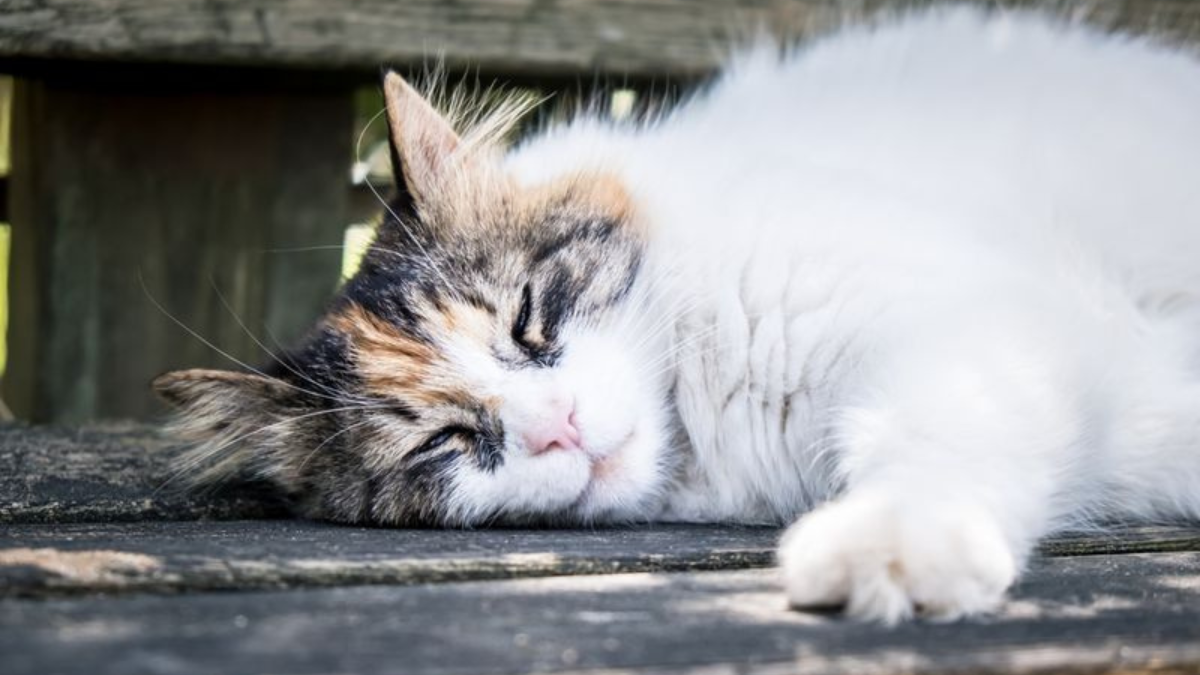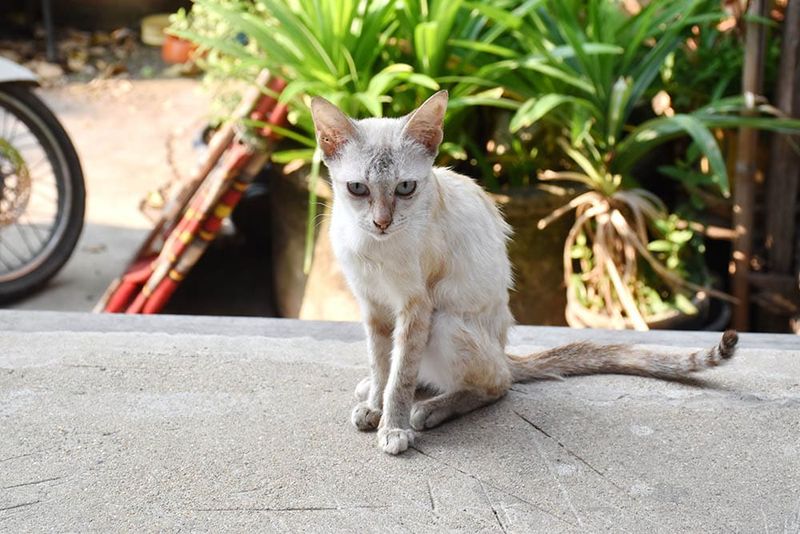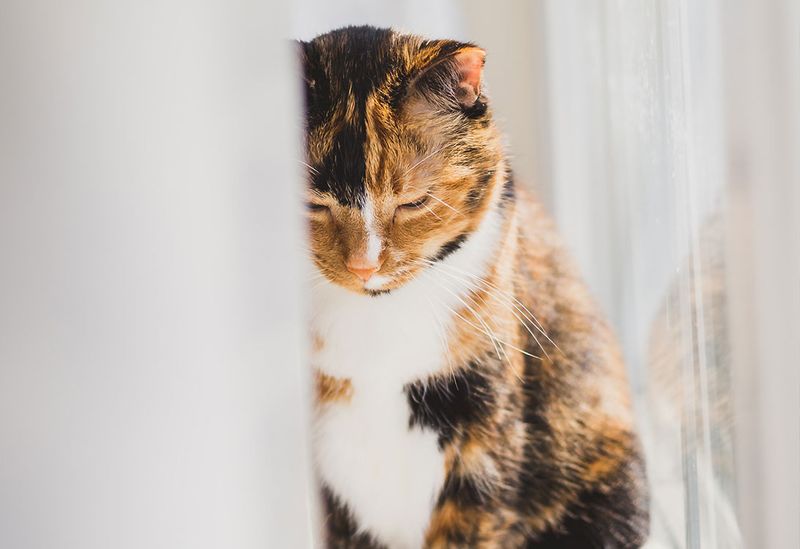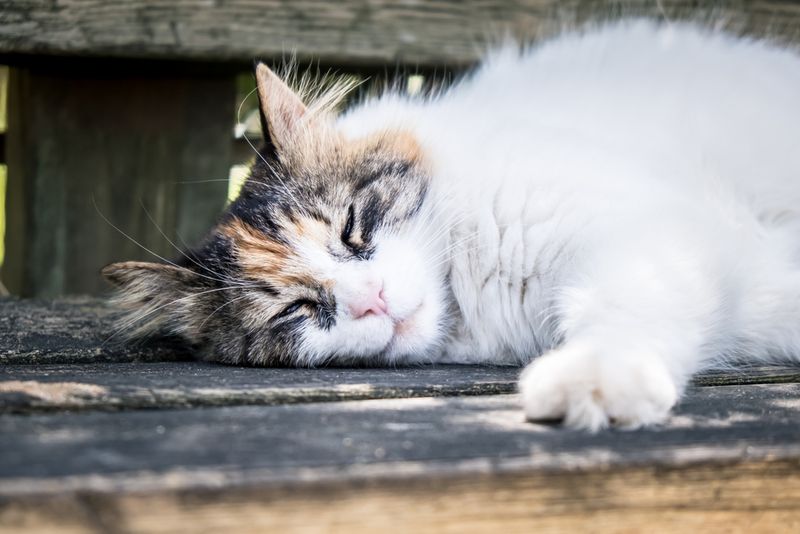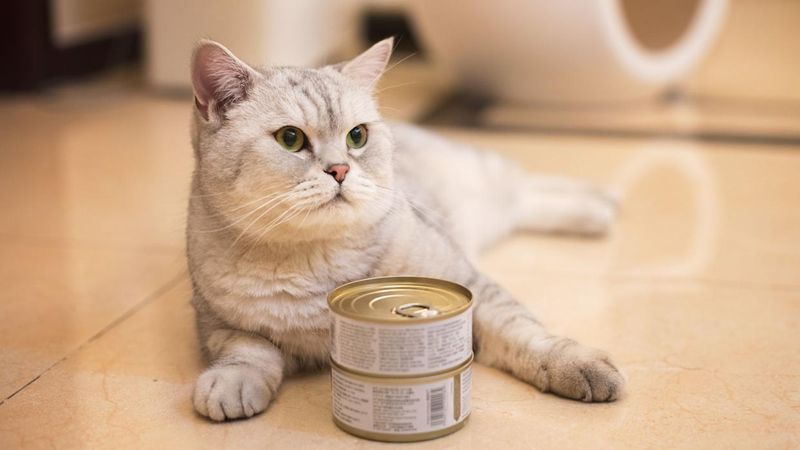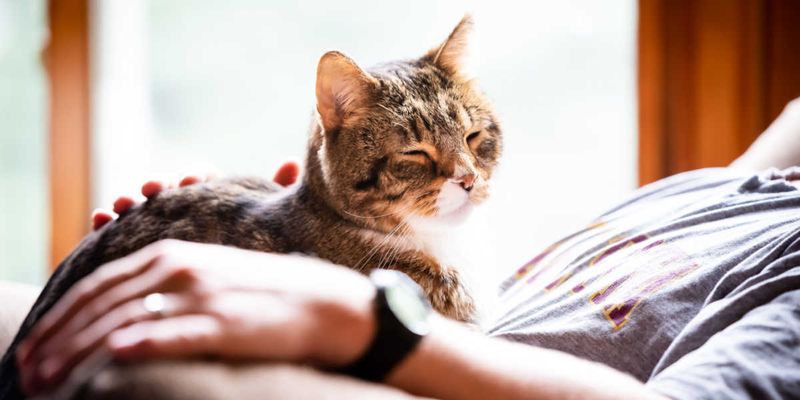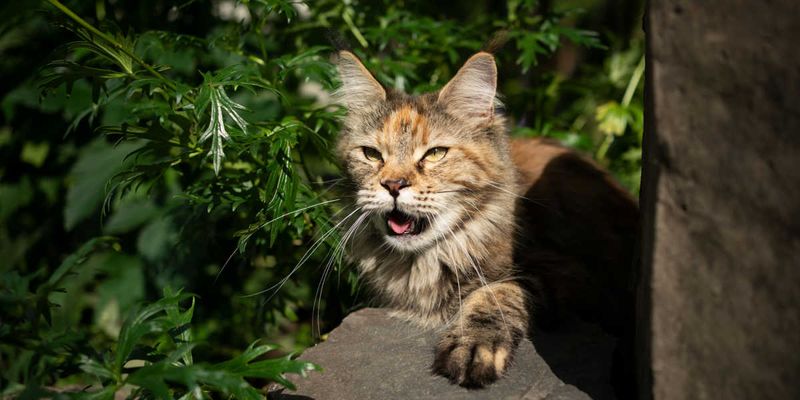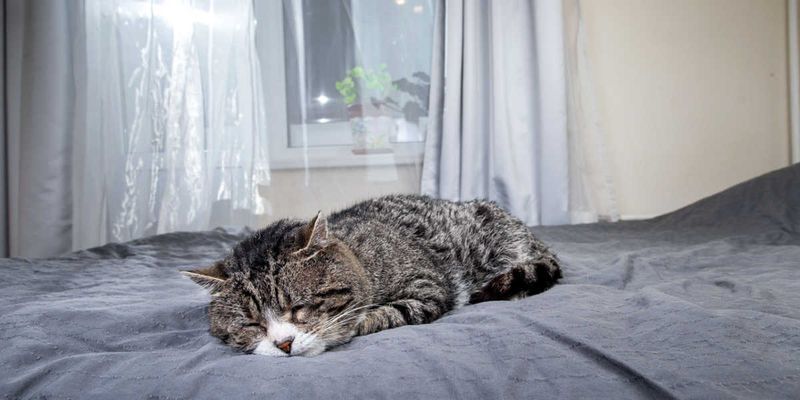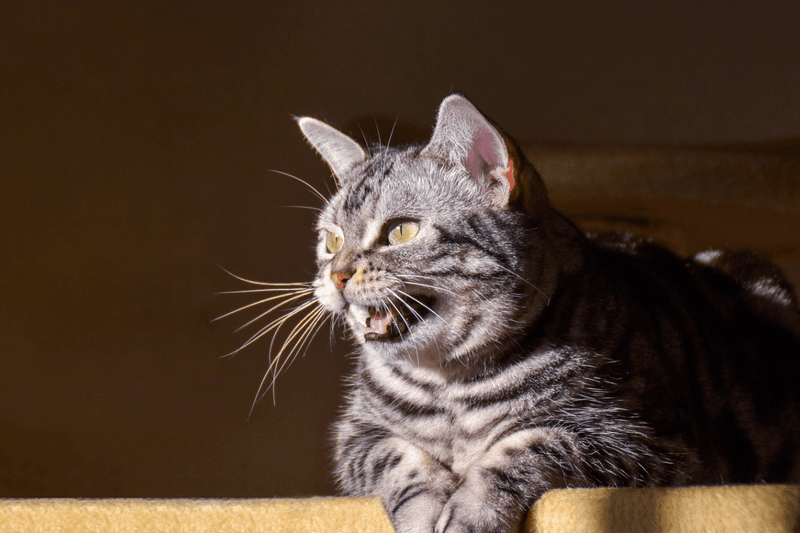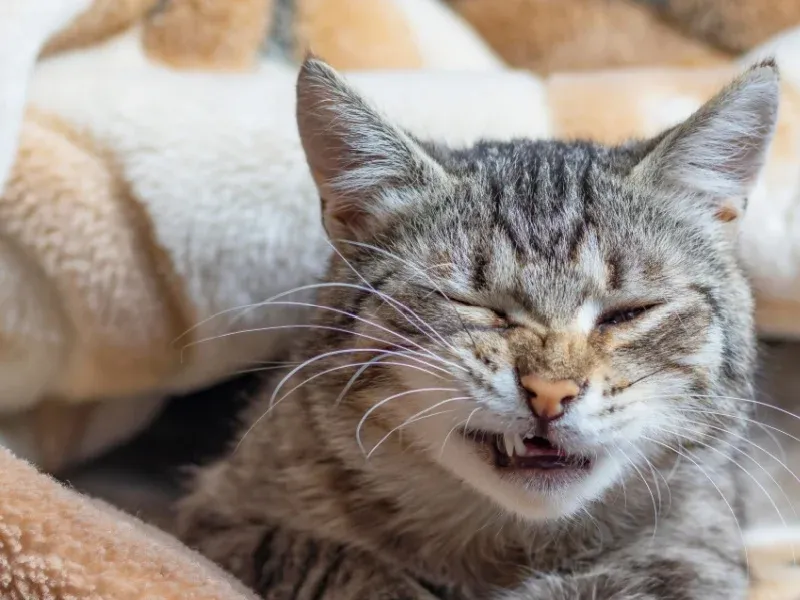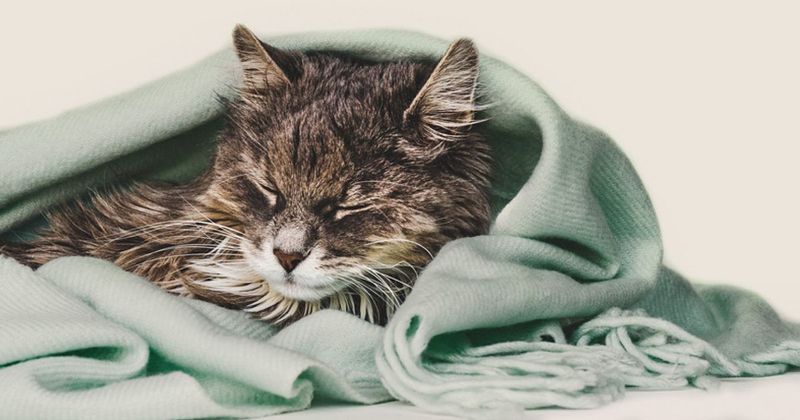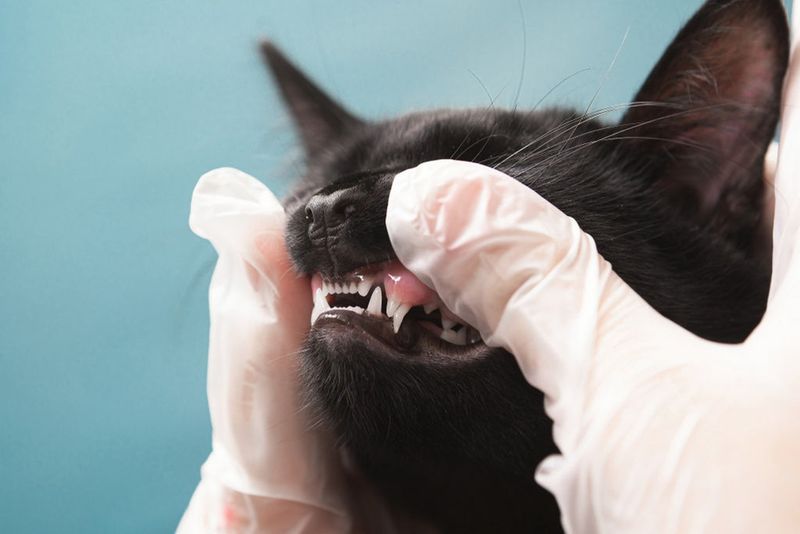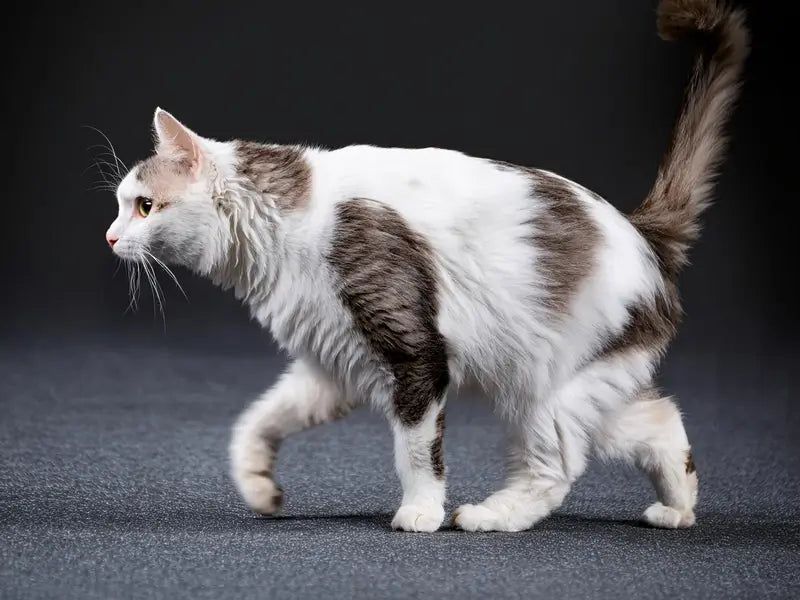📖 Table of Content:
- 1. Dramatic Weight Loss
- 2. Social Withdrawal
- 3. Severe Lethargy
- 4. Loss of Appetite
- 5. Difficulty Breathing
- 6. Incontinence Issues
- 7. Poor Grooming Habits
- 8. Temperature Regulation Problems
- 9. Unusual Vocalization
- 10. Seizures or Muscle Tremors
- 11. Significant Behavior Changes
- 12. Gum Color Changes
- 13. Refusing Favorite Activities
- 14. Altered Sleep Positions
- 15. Physical Weakness
- 16. Changes in Eye Appearance
Cats have an instinct to conceal illness, a trait inherited from their wild ancestors. This makes it challenging to recognize when their health is declining. Being able to identify subtle changes is crucial for ensuring they receive the care they need.
As cats near the end of their lives, certain signs may become apparent despite their efforts to hide weakness. Observing these behaviors allows for better support and comfort during this delicate time. Timely recognition can improve their quality of life in their final days.
Understanding these warning signals helps guide decisions about medical care and pain relief. It also supports compassionate choices that prioritize the cat’s comfort and dignity. Awareness and preparedness make a significant difference in providing a peaceful transition.
1. Dramatic Weight Loss
Sudden or significant weight loss is one of the most noticeable indicators of serious health problems in cats. Their once-filled frame becomes bony, with visible spine and hip bones protruding through their fur.
Many terminal illnesses cause cats to burn calories rapidly or lose their appetite entirely. Even if your cat still eats, their body might not process nutrients effectively anymore.
Weekly weigh-ins can help track changes. A loss of more than 10% of body weight in a month warrants immediate veterinary attention, as this rapid decline rarely happens without an underlying serious condition.
2. Social Withdrawal
Cats approaching death often seek solitude, a primal instinct to protect themselves when vulnerable. Your normally social kitty might hide under furniture, in closets, or in other secluded spots for extended periods.
Some cats that previously enjoyed cuddles may now resist being touched or held. This isn’t rejection – it’s self-protection when they’re feeling pain or discomfort.
Conversely, some typically independent cats become unusually clingy, seeking constant reassurance. Either behavioral change represents a significant departure from normal patterns and deserves attention, especially when combined with other symptoms on this list.
3. Severe Lethargy
While cats naturally rest 12 to 16 hours daily, a cat nearing the end of life often moves very little. The playful energy fades, leaving the cat to stay mostly still and uninterested in usual stimuli.
Normal movements become labored efforts. Getting up for water or to use the litter box requires visible exertion, and they may return to their resting spot immediately after.
Pay attention to how they sleep – a cat nearing the end often sleeps more deeply than usual and may be difficult to rouse. This profound lethargy signals their body conserving energy for essential functions only.
4. Loss of Appetite
Food refusal is particularly concerning in cats. Even the most tempting treats – freshly cooked chicken, tuna, or warming food to enhance aromas – fail to generate interest in a cat near life’s end.
Watch for subtle changes, too. They might approach food bowls out of habit but walk away without eating, or only lick gravy while leaving solids untouched. Some cats start avoiding hard kibble while still accepting softer foods.
Hydration becomes equally important to monitor. A dying cat often reduces water intake alongside food. After 24-48 hours without eating, hepatic lipidosis (fatty liver disease) becomes a serious risk, making veterinary intervention crucial.
5. Difficulty Breathing
Labored breathing signals serious distress in cats approaching life’s end. You might notice their sides heaving with each breath or their mouth hanging open while breathing – cats normally breathe through their nose, so open-mouth breathing indicates respiratory distress.
Listen for unusual sounds like wheezing, rattling, or gurgling. Count their breaths: normal cats take 20-30 breaths per minute while resting; significantly faster or slower rates warrant concern.
Some cats develop an irregular breathing pattern with periods of shallow breaths followed by deeper ones. This concerning symptom, sometimes called Cheyne-Stokes respiration, often appears in the final stages of life and requires immediate veterinary attention.
6. Incontinence Issues
Bathroom accidents become common when cats near the end of life. Your previously fastidious feline might urinate or defecate outside the litter box, sometimes while sleeping or resting, unaware it’s happening.
Physical weakness plays a role – they simply can’t make it to the litter box in time. Neurological changes can also affect their awareness of bodily functions. You might notice them attempting to use the litter box but missing entirely or having difficulty maintaining proper posture.
Keep your cat comfortable by placing waterproof pads in their favorite resting areas. Gentle cleaning with unscented wipes helps prevent skin irritation from prolonged contact with waste, preserving their dignity during this difficult time.
7. Poor Grooming Habits
Spending up to 50% of their waking hours grooming, cats’ appearances reflect their well-being. When a cat is dying, its coat may become dull, matted, and greasy, particularly around the rear where self-care wanes.
Dandruff often appears, and you might notice food remnants stuck to their face or chest. Their paws and face, usually kept meticulously clean, may remain dirty after eating or using the litter box.
This grooming decline happens for several reasons: lack of energy, physical pain when twisting to reach certain areas, or cognitive changes affecting their normal routines. Offering gentle brushing provides comfort while maintaining their hygiene during this difficult transition.
8. Temperature Regulation Problems
Cats nearing life’s end often struggle to maintain normal body temperature. You might find your cat seeking unusual warmth – sleeping against radiators, under blankets, or in sunny spots, even on hot days.
Feel their extremities – ears, paws, and tail tips may feel noticeably cooler than their body. Some cats develop a distinctive cool feeling around their nose and mouth.
As organ systems begin shutting down, their body loses its ability to regulate temperature effectively. Providing heated beds or gentle warming with blankets offers comfort, but avoid direct heat sources that could burn them. Temperature changes often accelerate in the final days, making this an important sign to monitor.
9. Unusual Vocalization
Changes in a cat’s vocal patterns often signal distress or disorientation in their final days. A normally quiet cat might start howling, yowling, or crying, especially at night. These vocalizations typically sound different from their normal meows – often lower-pitched, more mournful, or seemingly confused.
Conversely, some vocal cats become eerily silent. The absence of their usual chatty greetings or demands can be equally concerning as excessive noise.
These vocal changes may stem from pain, cognitive dysfunction, or sensory losses. Senior cats often develop hearing loss or vision problems that contribute to disorientation. Providing gentle reassurance and maintaining a consistent environment helps reduce their anxiety during these confusing episodes.
10. Seizures or Muscle Tremors
Neurological symptoms like seizures or tremors often appear as cats approach the end of life. During a seizure, your cat might collapse on their side, paddle their legs, drool excessively, or lose bladder control. Milder episodes may manifest as facial twitching or brief periods of disorientation.
Between dramatic episodes, you might notice subtle muscle tremors, particularly in the legs or face. Some cats develop head tilts or walk with an unsteady gait, bumping into objects they previously navigated easily.
These symptoms can result from various conditions: brain tumors, kidney failure causing toxin buildup, or age-related neurological degeneration. Document the frequency and duration of episodes to help your veterinarian assess your cat’s condition and provide appropriate comfort measures.
11. Significant Behavior Changes
Personality shifts often signal serious health declines in cats. A formerly affectionate cat might suddenly reject handling, while an independent cat might become unusually clingy. These changes frequently indicate pain or cognitive dysfunction.
Spatial confusion becomes common – your cat might stare blankly at walls, get stuck in corners, or seem lost in familiar surroundings. Some cats display sundowning behavior, becoming more agitated or confused in the evening hours.
Previously established routines may disappear entirely. The cat who always greeted you at the door or demanded breakfast at specific times stops these predictable behaviors. These profound personality changes reflect internal neurological or physiological changes as their body systems begin to fail.
12. Gum Color Changes
Healthy cats have pink gums similar to human gums. As death approaches, gum color often shifts dramatically – becoming pale, white, bluish, or yellowish. These changes indicate serious circulatory or organ problems.
Press your finger gently against your cat’s gum and release – normally, the white pressure spot returns to pink within 1-2 seconds. In failing cats, this capillary refill time extends significantly, showing poor circulation.
The gums might also feel different – sticky or tacky instead of moist, signaling dehydration. Bad breath beyond normal cat breath often accompanies these changes, indicating kidney failure or severe dental disease. These oral changes provide important clues about your cat’s overall condition and remaining quality of life.
13. Refusing Favorite Activities
When cats stop engaging in behaviors they once loved, it often signals their declining health. The window perch that was once their favorite lookout spot sits empty. The catnip toys that used to trigger playful frenzies lie untouched.
Daily rituals disappear – no more racing to the kitchen when they hear the treat bag or purring sessions during evening TV time. These activities required energy they no longer possess or brought joy they can no longer feel.
This withdrawal extends beyond physical limitations. Many cats approaching death lose interest in stimuli that once captivated them – birds outside windows, household sounds, or family activities. This detachment represents a natural pulling away from the physical world as their body prepares for transition.
14. Altered Sleep Positions
Cats near death often adopt unusual sleeping postures that differ markedly from their normal habits. A cat who typically curls up might start sleeping fully stretched out to ease breathing. Conversely, some cats curl into tight balls, even in warm environments, as they lose body heat.
Location preferences frequently change. They might abandon favorite sleeping spots for unusual places – directly on cool floors, in dark corners, or sometimes even in their litter boxes (a particularly concerning sign).
Head positioning offers additional clues. Cats having trouble breathing often sleep with their heads elevated or necks extended. Some rest their heads against walls or furniture for support. These positional changes represent attempts to find comfort as their bodies struggle with basic functions.
15. Physical Weakness
Muscle weakness becomes increasingly evident as cats approach life’s end. Your once-agile companion struggles with basic movements – jumping onto furniture becomes impossible, and even walking turns into an unsteady wobble.
Front leg weakness often appears first, causing your cat to drag themselves using their stronger back legs. Eventually, even standing becomes difficult. Many cats begin sitting in a hunched, uncomfortable position with their feet tucked under them instead of the relaxed loaf position healthy cats adopt.
Watch for head drooping or trembling when they try to eat or drink. Some cats need assistance staying upright during these activities. This progressive weakness reflects their body’s diminishing resources and energy, focusing only on critical functions as non-essential systems begin shutting down.
16. Changes in Eye Appearance
Eyes truly serve as windows to your cat’s health status. As death approaches, their eyes often appear different – dilated pupils that respond poorly to light changes, or uneven pupil sizes suggesting neurological issues.
The third eyelid (nictitating membrane) may become more visible, partially covering the eye even when they’re awake. This whitish-pink membrane normally only shows when cats are very ill or extremely relaxed.
The eyes themselves might look sunken from dehydration or bulging from pressure changes. Their characteristic shine disappears, replaced by a dull, unfocused gaze. Many owners describe their dying cat’s eyes as “distant” or “looking through them rather than at them” – a subtle but powerful indicator of their fading connection to their surroundings.
